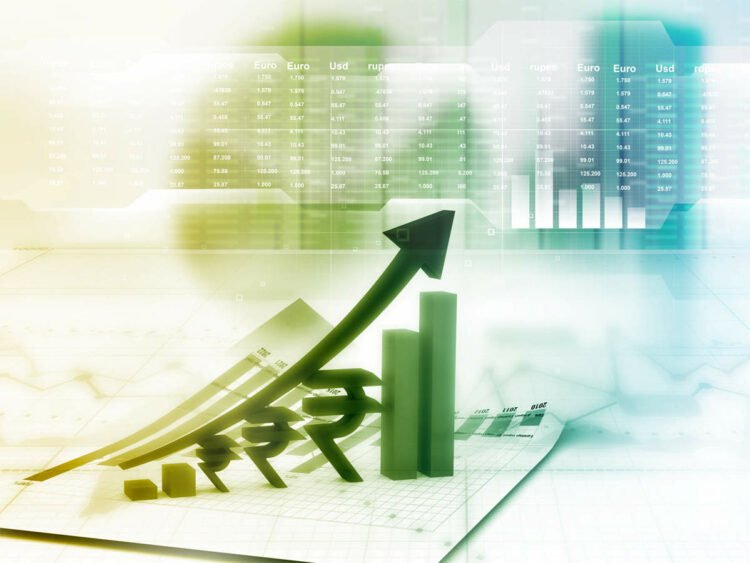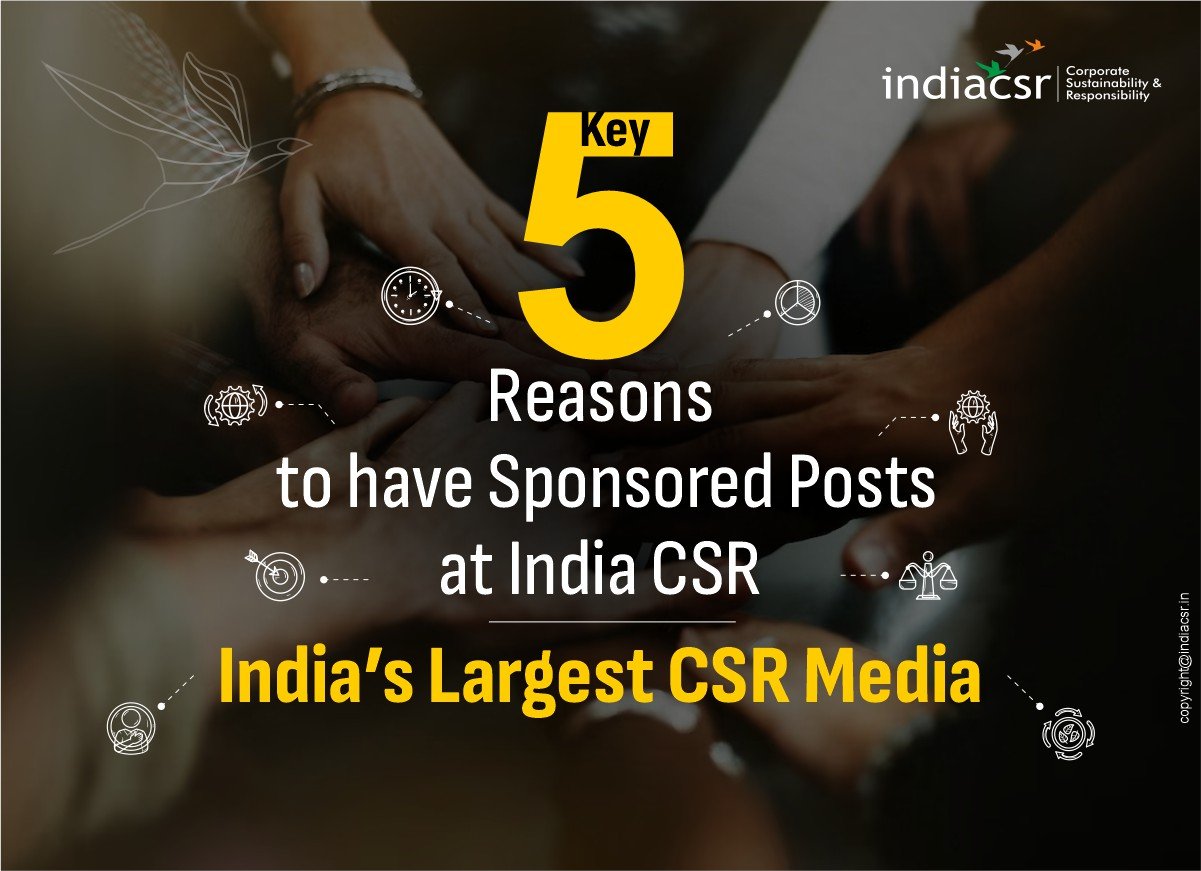By India CSR Research
The economic recovery taking hold during the second half of FY 2020–21 was disrupted by the second wave of COVID-19 in early FY 2021–22. This wave was more virulent than the first and severely tested the country’s health infrastructure. However, the wave receded rapidly and had a relatively limited impact on aggregate demand. The strategies used to prevent the spread of the virus were more localised and region-specific than those employed during the first wave of the pandemic. According to the Reserve Bank of India (RBI), the loss of output was 40% less than in the first wave.
8.7% GDP Growth in FY 2021–22
Central Statistics Office estimated the real gross domestic product (GDP) to have risen by 8.7% in FY 2021–22. Official data also indicates that the private final consumption expenditure increased by around 8% compared to FY 2020-21. The value-added figures for the manufacturing sector was up by 9.9% while the value-added for the services sector rose by 8.4% in FY 2021-22.
Consumer price index (CPI) inflation
High global commodity prices and domestic inflation, coupled with the withdrawal of easy monetary policy by the RBI are likely to serve as headwinds to growth in FY 2022-23. Consumer price index (CPI) inflation moderated close to the target of 4% in April 2021 but remained volatile thereafter. In May and June 2021, CPI inflation breached the upper tolerance level of 6%, with a sharp pickup in food, fuel and core inflation. However, food inflation then ebbed, and headline CPI inflation decreased to 4.4% by September 2021. Subsequently, in February 2022, another rise in food inflation led to an increase in headline CPI inflation up to 6.1%.
Also Read: Economic Overview of India for FY 2021-22
Disruption in Global supply chains
The final March reading for FY 2021–22 was 7%, caused by a trade shock due to increased global crude oil and edible oil prices. Global supply chains were disrupted as a result of the pandemic; therefore, major global central banks considered inflation transitory and hoped that supply chains would improve when the effects of the pandemic eased. However, recently, the geopolitical crisis between Russia and Ukraine and the increase in virus cases in China have once again disrupted supply chains, leading to fears that elevated global inflation is likely to continue for a longer term.
Regulatory and supervisory framework for both banking Sector
A strong and well-functioning financial sector fortifies the foundations of growth and development. During the pandemic, the RBI accorded the highest priority to preserving financial stability by taking quick and decisive steps to ease liquidity constraints, ensuring adequate credit flows to the production sector and restoring market confidence. The RBI also strengthened the regulatory and supervisory framework for both banking and non-banking financial sectors to proactively identify, assess and deal with vulnerabilities.
Financial Stability Report (December 2021)
Thus, despite pandemic-induced bouts of volatility, the Indian financial system remains resilient and is now in a better position to meet credit demands as recovery takes hold and private investment activity picks up. According to the RBI’s Financial Stability Report (December 2021), Scheduled Commercial Banks (SCBs) continued to bolster their capital, with a capital-to-risk assets ratio (CRAR) of 16.6% in September 2021.
The provision coverage ratio (PCR)
Banks’ asset qualities also improved, with gross non-performing asset (GNPA) and net non-performing asset (NNPA) ratios declining to 6.9% and 2.3%, respectively. The provision coverage ratio (PCR) increased from 67.6% in March 2021 to 68.1% in September 2021. The RBI’s macro-stress tests for credit risks indicate that SCBs’ GNPA ratio may increase to 8.1% by September 2022, but banks can still comply with minimum capital requirements under severe stress scenarios.
Also Read: No CSR Spending by YES Bank in FY 2021-22
Macro conditions in FY 2022–23
The assessment of macro conditions into FY 2022–23 will critically depend on the longevity of the current geopolitical problems and their impact on commodity prices. Brent crude oil prices showed an almost 70% increase by the end of March 2022 compared to the end of March 2021. Faced with the rude shock of inflation, larger central banks will continue to tighten and normalise relevant monetary policies.
Reduction of forecasts for global trade
Sovereign bond yields have hardened globally while emerging market economies are likely to see a spate of capital outflows and a weakening of their currencies. The World Trade Organisation recently reduced its forecasts for global trade, indicating that the geopolitical crisis could lead to food shortages in poorer countries, and 3% growth is expected in 2022 (down from the earlier expectation of 4.7%).
Inflation risks
As per the RBI’s assessment, inflation will increase by 30 bps if oil is higher than the baseline of USD100 per barrel by 10%, or vice-versa. Inflation risks also emanate from longer-than-expected supply chain disruptions that cause a larger pass-through of input cost pressures to output prices in the event of stronger demand conditions and global financial market volatility arising from faster normalisation of monetary policy by advanced economies.
Correction in global commodity prices
The downside risk arises from the early mending of supply chains, which will cause muted pass-through of output prices and a correction in global commodity prices. The RBI’s inflation projection for FY2022-23 is placed at 6.7% with Q1FY23 at 7.5%, Q2 at 7.4%, Q3 at 6.2% and Q4 at 5.8%. India is also likely to see downside effects on growth due to higher commodity prices. On the one hand, the RBI’s calculations assume crude oil will be 10% above the baseline of USD100 per barrel, and domestic growth is likely to weaken by 20 bps.
Rabi has good prospects that should lift rural demand
On the other hand, if crude prices fall below the baseline by 10%, this could boost growth by 20 bps. Rabi has good prospects that should lift rural demand, and the ebbing of the pandemic risk is likely to bolster the contact-intensive services sector. The government has also taken significant initiatives to boost private investments; for example, the Production Linked Incentive Scheme (PLI). With capacity utilisation levels now reported at 72.4% for Q3FY22 and with corporate balance sheets deleveraged, expectations are strong for private sector capacity building.
Also Read: CSR: Bharti Foundation Uplifting the community, Spends Rs. 1.64 Cr
Government’s capital expenditures are likely to continue
The downside risks to growth emanate from the surge in input costs, continued supply tightness of essential components, the tightening of global financial conditions and weakening global trade. The government’s capital expenditures are likely to continue to be important for the economy in maintaining its growth prospects by crowding in private investments.
The budgeted capital expenditure for FY 2022–23
The budgeted capital expenditure of the Centre is Rs. 7.5 trillion for FY 2022–23, a sharp rise of 36% over the revised estimates (RE) for FY 2021–22. The multiplier effects of capital expenditures are much higher, at 1.29, than those for revenue expenditures, at 0.37. More importantly, the impulse response of capital expenditures (the number of years the impact of a rise in expenditures is felt) is at 3.56 in the fourth year of incurring the expenditure. Even as near-term growth is poised for a moderation RBI estimates real growth at 7.2% for FY 2022–23, domestic growth drivers are expected to improve considerably in the longer term, supported by the government’s infrastructure push.
THE IMPACT OF COVID-19
The COVID-19 pandemic has delivered a once-in-a-century crisis, with a health shock morphing into a macroeconomic and financial shock. The RBI undertook several measures to deal with such an exceptional situation. Borrowing costs fell to their lowest levels in decades and spreads narrowed across rating cohorts. Record levels of government securities, corporate bonds and debentures were issued. Corporate entities deleveraged seamlessly and reduced high-cost debt while improving profitability and retaining earnings for future capex. Overall, the financial sector has remained fully functional and helped anchor the recovery process, while the RBI’s policy actions have yielded the desired results in a smooth and orderly manner.
As these objectives are achieved on an ongoing basis, the RBI has turned its attention to dynamically rebalancing liquidity while maintaining adequate liquidity in support of its accommodative stance. This rebalancing has involved two sets of operations. The first focuses on rebalancing liquidity from the overnight fixed-rate reverse repo towards the 14-day variable rate reverse repo (VRRR) auction as the main operation, which is supported by fine-tuning auctions of varying tenors.
The second involves conducting repo auctions of one to three-day maturities to meet transient liquidity mismatches and shortages. As a result of the RBI’s rebalancing operations, daily average absorption under the fixed rate reverse repo moderated sharply since August 2021 when rebalancing started. However, overall system liquidity remains in a large surplus. Reflecting the migration of surplus liquidity from the overnight window to longer tenors, the effective reverse repo rate – the weighted average rate of the fixed rate reverse repo and the VRRRs of longer maturity, increased from 3.37% at the end of August 2021 to 3.87% at February 4, 2022.
With pressure building up as a result of inflation, the RBI says that it will remain focused on “withdrawal of accommodation” and has already raised the repo rate by a cumulative 90 bps in May and June, 2022. The RBI has also instituted a Standing Deposit Facility (SDF), which is now the lower end of the Liquidity Adjustment Facility (LAF) corridor.
Also Read: CSR: NASSCOM Foundation collaborates with Tietoevry for a joint initiative to empower NGO ecosystem
SDF rate now stands at 4.65%.
In the forex market, the Indian rupee is resilient in the face of global spillovers, even relative to emerging market economy peers. The sustainability of India’s external sector is anchored by high FX reserve buffers amid a rise in the current account deficit (CAD).
In H1FY22, the CAD was 0.1% of the GDP and was underpinned by robust exports of goods and services. The merchandise trade deficit has widened in recent months, partly due to elevated crude oil prices and a rise in non-oil imports in line with domestic economic recovery. Consequently, the CAD/GDP widened to 2.7% in Q3FY22 and is expected to stay at this level in FY 2022–23 if oil prices average at USD100 per barrel. Given the tightening of global monetary policy, there is a balance of payment deficit for FY 2022–23 that could comfortably be managed by the RBI with its large FX surplus.






















